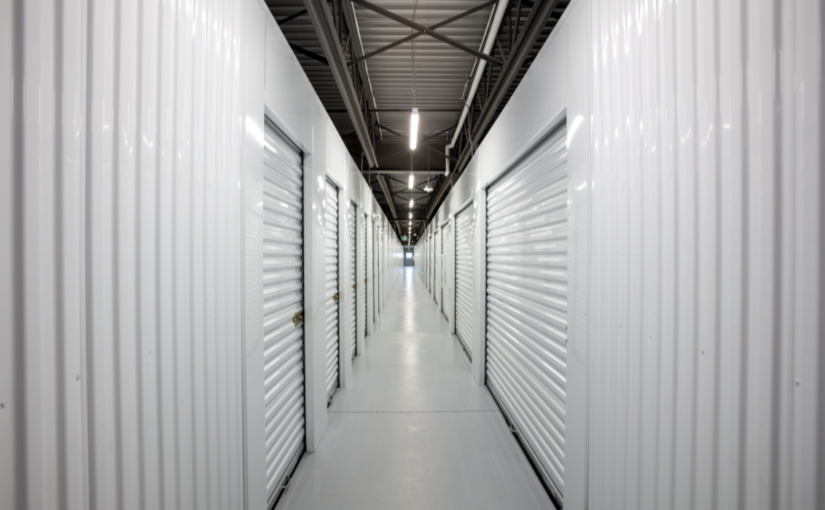back
How to determine if a self-storage property is a good investment for financing
03-2023

In recent years, self-storage properties have grown in popularity as an investment strategy. Investors are hoping to take advantage of the growing demand for storage space by buying self-storage facilities. Yet figuring out whether a self-storage building is a wise financial investment can be challenging. We’ll go over the essential elements to take into account when assessing a self-storage property as an investment opportunity in this article.
Location
While assessing a self-storage facility, the location is the first thing to take into account. The property’s location is essential to its success because it will influence how much storage space is needed. A self-storage facility with a high demand for storage space and a dense population is more likely to succeed than one with a low demand and a rural location.
Also, the property’s visibility and accessibility will depend on its location. A self-storage facility that is close to a main thoroughfare, has great visibility, and is simple to get to is more likely to draw potential clients than one that is hidden away in a rural area.
Occupancy Rates
While assessing a self-storage facility’s investment potential, it’s crucial to also take into account its occupancy rates. The area’s demand for storage space and the facility’s capacity to draw in and keep patrons can both be inferred from occupancy rates.
To gain a sense of the property’s success over time, investors should look at its past occupancy rates. In comparison to a property with changing occupancy rates, one with consistently high occupancy rates is more likely to be a viable investment option.
The property’s existing occupancy rate should also be taken into account. A property with a low occupancy rate might not be adequately marketed or there may not be much need for storage space in the neighborhood. Investors should look into the reasons for the low occupancy rate and see whether they can make any changes to boost demand.
Competition
When assessing a self-storage property as an investment opportunity, it’s also crucial to take the local level of competition into account. It could be challenging for a new location to draw clients and achieve high occupancy rates if there are already multiple self-storage facilities in the neighborhood.
Investors should investigate the local competitors and think about if the property has any special qualities or benefits that will set it apart from the competition. For instance, a facility that provides 24-hour access or climate-controlled units may be more desirable to potential consumers than one that does not.
Revenue Potential
When assessing a self-storage property’s investment potential, it is essential to take its revenue potential into account. To calculate the property’s cash flow and profitability, investors should consider its historical revenue and expenses.
Examining a self-storage facility’s income per square foot is one way to gauge its potential for profit. This statistic might shed light on how much money the building is making per square foot. Investors should assess the property’s performance by comparing its revenue per square foot to industry averages.
Investors should also take the possibility of revenue growth into account. Its potential for revenue may improve, for instance, if the property contains spare space that might be turned into more storage units or if the rental rates can be raised.
Operating Costs
Investors should take the property’s operational costs into account in addition to its potential for revenue. Property taxes, insurance, utility, and maintenance expenditures are examples of operating expenses.
To measure a property’s profitability, investors should assess its previous running costs. Investors should also think about whether there are any other cost savings that might be possible. For instance, upgrading to more energy-efficient heating and cooling systems may lower running expenses if the property is not currently using such systems.
Financing Options
Furthermore, while assessing a self-storage property as an investment opportunity, investors should take their financing alternatives into account. Traditional bank loans, private equity, and crowdsourcing are just a few of the potential forms of finance.
Investors should compare each financing option’s interest rates, terms, and repayment plans before deciding. Also, investors should think about the potential ROI and whether the financing method fits with their investment objectives and risk tolerance.
Investors should also think about whether they have the tools and experience needed to manage a self-storage facility. Property management can take a lot of time and involves expertise in customer service, marketing, and facility upkeep. Whether an investor will manage the property themselves or engage a property management company should be a consideration.
When assessing a self-storage facility as an investment opportunity, various variables must be carefully taken into account. When deciding whether to finance a self-storage unit, it’s necessary to take location, occupancy rates, competition, revenue possibilities, and operational costs into account. Investors should also think about their financing choices as well as whether they have the skills and resources necessary to operate the property. Investors can make wise judgments and improve their chances of success in the self-storage market by considering these variables.
F2H Capital Group is a debt advisory firm specializing in negotiating the best terms for your commercial real estate projects. The company offers a range of financial products and services, including fixed loans, bridge loans, and construction loans across all asset types. Please contact us for any of your financing needs.

